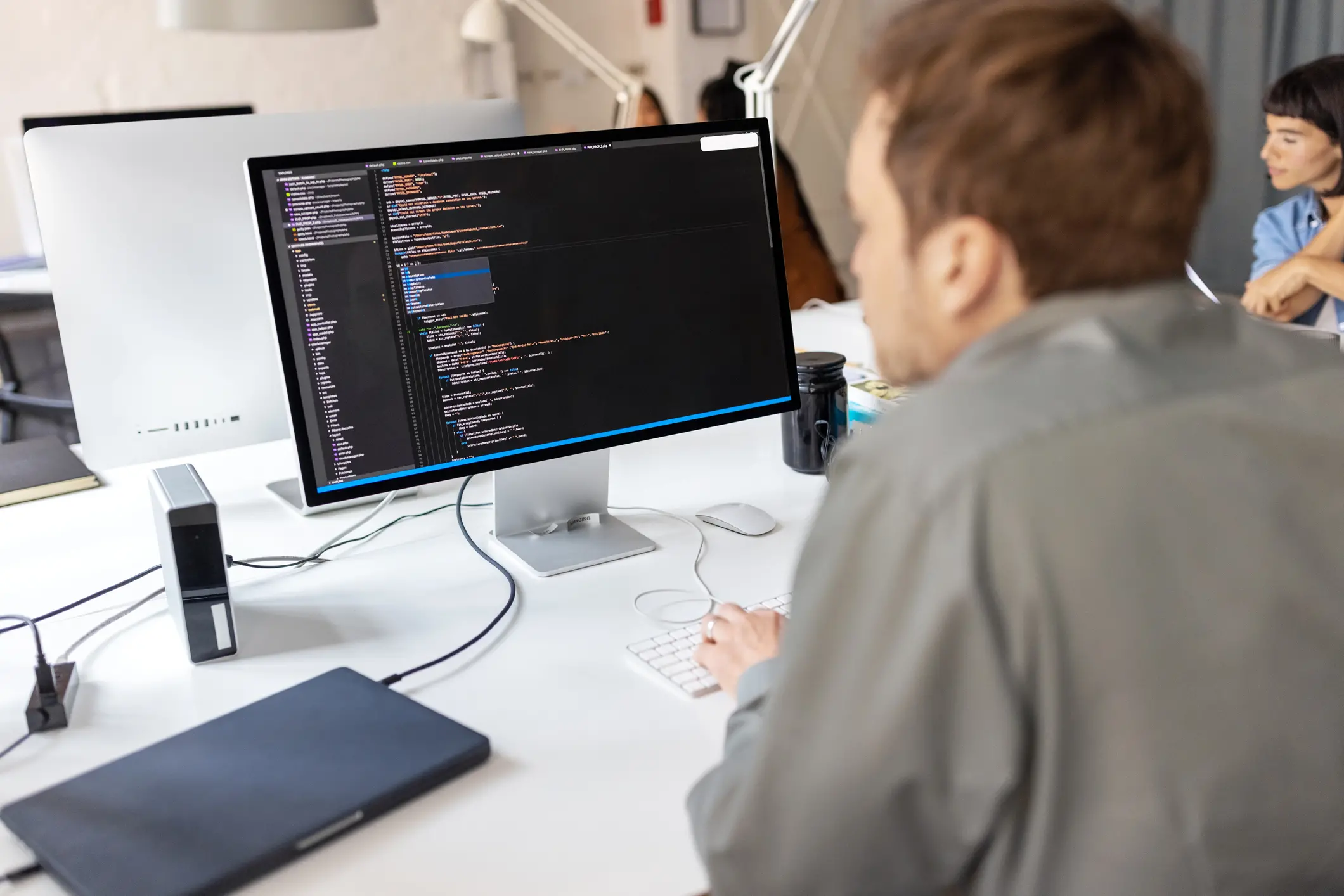“AI now writes 50% of the code at our company.” It’s the kind of headline that stops you mid-scroll whether you’re a developer wondering about your job security or a tech executive calculating productivity gains.
But behind this striking statistic lies a more complex reality that most discussions skip over.
The truth is, there’s a massive gap between what AI suggests, what developers accept, and what makes it into production systems. Understanding this distinction is crucial for developers adapting their skills, managers setting realistic expectations, and organizations making informed decisions about AI adoption.
Breaking Down the Numbers
When companies tout that AI writes 50% of their code, they’re typically referring to the percentage of characters or lines in their codebase that originated from AI suggestions often in non-production environments. But these statistics measure three very different things: suggested vs. accepted vs. shipped.
GitHub’s own data shows that while Copilot might suggest code for 35-40% of what a developer types, only about 26% of those suggestions get accepted. Furthermore, we have far less data on how much accepted code actually survives code review, testing, and makes it to production unchanged.
Context matters enormously. For example: A junior developer working on backend CRUD operations of an app might accept 40% of AI suggestions, while a senior engineer architecting complex distributed Agentic AI systems might accept less than 10%. The type of project, programming language, and company culture all dramatically impact these numbers.
Inline Code Suggestions: The Current Reality
Most developers encounter AI-assisted coding through inline suggestions. Tools like GitHub Copilot and Amazon CodeWhisperer excel at “boilerplate code” – repetitive, predictable patterns that make up a surprising amount of programming. Need a standard REST API endpoint? A database connection setup? AI suggestions often nail these on the first try.
According to research published in Communications of the ACM, GitHub Copilot has an acceptance rate of 27% while other studies show acceptance rates can reach 40% for specific languages like Python. The variation is significant across programming languages with GitHub Copilot working especially well for Python, JavaScript, TypeScript, Ruby, Go, C#, and C++ likely because these languages have more training data and standardized patterns.
But acceptance doesn’t equal production success. A suggestion that looks perfect might fail integration tests or create performance bottlenecks that only surface under load. Code review and real-world usage act as additional filters that many AI suggestions don’t survive.
The Production Reality
Here’s where the rubber meets the road: what happens to AI-generated code as it moves through the software development lifecycle? The filtering process is extensive:
- Code reviews catch logical errors and architectural problems.
- Automated testing reveals functionality gaps and integration issues.
- Performance testing might show that AI’s “correct” solution is too slow for production use.
While we don’t have comprehensive industry data yet, early studies suggest that only 60-70% of accepted AI suggestions make it through code review unchanged. Factor in testing and other quality gates and the percentage of AI suggestions that reach production as originally generated drops significantly.
This doesn’t mean AI isn’t valuable. Code that requires modification can still save development time. But measuring AI’s impact purely by initial generation rates dramatically overstates its direct contribution to shipped software.
What This Means for Different Stakeholders
For individual developers, AI tools are most valuable for accelerating routine tasks and exploring unfamiliar domains, but they can’t replace critical thinking, architectural decision-making, and deep debugging skills. The key is developing judgment about when to lean on AI versus when to rely on human expertise.
For organizations, the ROI calculation is more complex than simple productivity metrics suggest. While AI can accelerate certain development work, it may also introduce new categories of technical debt that require additional training and process changes.
Looking Forward
The trajectory suggests we’ll see higher percentages of AI-generated code reaching production, but this progress won’t be linear. Improvements in AI capabilities, better integration with development workflows, and more sophisticated human-AI collaboration patterns will all contribute to increased effectiveness.
However, this evolution brings new challenges. Over-reliance on AI suggestions could lead to skill atrophy among developers. There’s also the risk of code homogenization if everyone uses the same AI tools trained on similar data.
When we hear that “AI writes 50% of code,” we need to ask: 50% of what, exactly? The real story is more nuanced and arguably more interesting. AI is becoming an increasingly sophisticated coding assistant excellent at accelerating routine work, but still requiring substantial human oversight, review, and refinement.
The future of software development isn’t about AI replacing developers. It’s about developers and AI becoming better partners.

